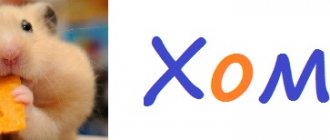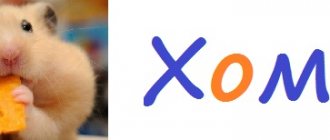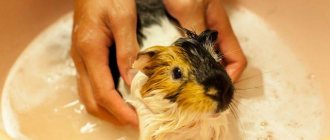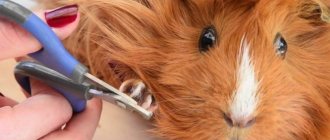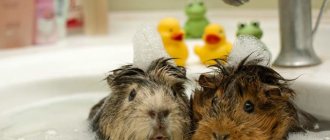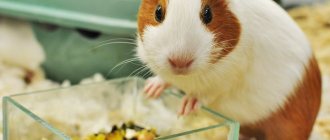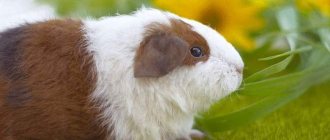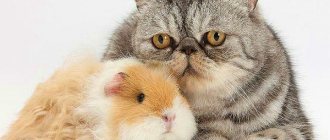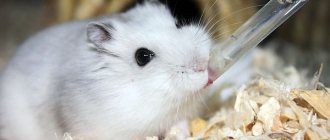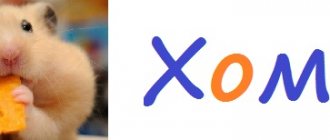What should the water be like?
Wild pigs quench their thirst with juicy herbs and fruits. At home, pigs often eat dry food and hay, so they need to leave water. Water for your pet should be freshly boiled or filtered, at room temperature. You need to change the fluid at least once a day, and in hot weather it is better to do it more often. There are bacteria in the water that begin to multiply at room temperature, which leads to the pet having digestive problems. And low water temperatures cause pneumonia in small rodents.
Food for thought: is it worth using?
Different owners are accustomed to different types of bedding, perhaps without particularly thinking about their advantages or disadvantages. Let's try to systematize the most frequently used ones.
Paper and others
This includes paper napkins, towels made of the same material, toilet paper and even newspaper. The option seems to be good and quite budget-friendly, but it is very impractical: such bedding is instantly saturated with urine and the corresponding smell. You can, of course, change them very often, but is it worth it?
In general, newspaper should be used only in emergency cases, when, say, the usual filler has run out. Then, having laid a thick layer of newspaper on the floor as an absorber, hay is placed on top.
Other “non grata” fillers include corn. In addition to the fact that it “can” become moldy, there have been cases when rodents had problems with their paws, or more precisely, with their soles.
Often pigs mistake it for food, and it swells in the stomach, which is harmful to the pet’s health.
Such bedding cannot be used on its own, and if it is used, then only as a bottom layer.
Hay/straw
These options as bedding are not the best solution. Rodents see them primarily as food. However, some experts believe that hay can be used in combination, for example, with a soft and highly absorbent cellulose filler.
This “combined” bedding is suitable for pigs with thick hair or for breeds with coarse and short hair.
But it is not recommended to use straw as bedding - it has quite a lot of “contraindications”:
- does not absorb moisture,
- is rotting
- has an unpleasant odor
- is dangerous - its hard stems can injure the pig, especially the eyes.
Only as a last resort can you lay straw on top of the shavings for a while.
Coniferous shavings
Pine shavings must be dried and ventilated, unless purchased already in such conditions. This will help get rid of essential oils that have a bad effect on the respiratory system of animals.
The disadvantage (not the most terrifying, it should be noted) is that during the pets playing and jumping in the cage, shavings and sawdust fly out of it, covering the floor around it.
Essential oils of cedar shavings are considered more aggressive. Despite the fact that they are capable of exterminating all kinds of insects, in addition to problems with the respiratory system of their favorite animals, they also create problems with the liver.
Since there is no urgent need to use this particular material for bedding, it is better to refrain from using it.
Main types of drinkers
There are two types of devices for pigs: a bowl and a plastic bottle with a ball mechanism.
A bottle with a plastic mechanism is convenient in small cages. This mechanism dispenses water in small portions, thanks to which the animal will not choke. This type of drinker prevents water from splashing in the cage and tipping over. You can take it on the road. Pets of any age can use it.
This device also has disadvantages:
- Labor-intensive washing. To wash the bottle and the ball mechanism, you will have to detach the drinker from the cage each time, thoroughly clean the inner surface of the bottle from plaque, and rinse the ball mechanism. Knocking noise when in use. When an animal drinks from such a device, the ball knocks against the walls of the cylinder. Given the nocturnal lifestyle of pigs, it is not recommended to place a cage in the bedroom. Not an ergonomic device. To quench its thirst, the pet will have to throw its head up. High price. This type of drinking bowl for guinea pigs is expensive.
Bowl as a drinking bowl
Bowls for guinea pigs as a drinking bowl are suitable for spacious cages, and if the pet is an adult.
It is better to choose a stable ceramic bowl so that your pet cannot turn it over.
The advantages of bowls include:
- Easy to clean. It is enough to rinse the bowl once a day and wash it thoroughly once a week in the dishwasher or by hand with a gentle detergent. Ergonomics of the device. The pet takes a comfortable physiological position to quench its thirst. No noise. Drinking from a bowl does not make loud noises. Acceptable price.
Flaws:
- Splashing water in the cage. Dirt getting into the water. There is a risk that the animal may choke or drown.
Small piglets, unable to control the amount of water they swallow, may choke. And very small children can drown due to their large size.
To prevent the bowl from tipping over, pet stores sell metal bowls that can be attached to a cage.
How to make a drinking bowl for a guinea pig with your own hands
It is not necessary to buy a device with a ball mechanism. You can make a drinking bowl for a guinea pig with your own hands.
For this you will need:
- The body of a simple stationery pen; a bearing ball from a bicycle (the diameter of the ball should move freely in the handle body); saw; sharpener; needle files to remove burrs; sealant.
The manufacturing process is simple for experienced inventors; a beginner will have to tinker a little.
You need to place a ball in the body of the pen. In the place where the ball gets stuck, you need to make a mark. At this mark, a part of the body is sawed off. The other end of the body also needs to be sawed off so that the length of the part becomes 5–6 cm. The edge of the body in which the ball gets stuck must be processed with a file or sanding paper, grinding off about a millimeter. After processing, you need to check how much the ball protrudes from the hole. The permissible protrusion is 1 mm. Next, check the tightness. You need to blow into the tube; if the passage is closed, then you can move on to the next point. If air passes through, then it is necessary to further sharpen the body so that the ball fits tightly to the edges of the handle body. At this stage, you can begin connecting the container and drinking device. But if it is planned that high water pressure will act on the ball, then the device needs to be modified. To do this, you will need a spring from an automatic pen and a rectangular wooden block. The spring is lowered into the body of the handle with the ball. And then you need to place the block. The peg should be in contact with the handle body at its corners. It is pushed until it comes into contact with the spring. This design will reduce the water pressure on the ball. The tube is inserted into the bottle. The joint is treated with sealant.
The DIY water bowl for your guinea pig is ready to use.
There is also a way to make a drinking device from a plastic bottle and straw. But such plastic is very soft; a rodent can easily damage the device.
Peppermint treat
Ingredients:
- 1 medium overripe banana.
- 2 chicken eggs.
- 3 tbsp. spoons of honey.
- 3 tbsp. tablespoons of liquid coconut oil (can be replaced with sunflower oil in the same amount).
- 1/2 teaspoon mint flavoring.
- 1/2 teaspoon baking powder.
- A quarter cup of carob (roasted carob powder). A small amount of cocoa can be substituted, but this is not recommended for animals. Therefore, try to find an original product.
- Oat flour.
Cooking procedure.
1. Mash the banana in a bowl.
2. Beat eggs into the resulting mass, add honey, baking powder, cinnamon and coconut (sunflower) oil.
3. Add oatmeal to the mixture to form a firm but slightly moist dough.
4. Divide the resulting volume into 2 equal parts.
5. Pour 1/4 cup of carob powder into one half, and add the same amount of flour to the second half. A hard lump should form that does not stick to your hands.
6. Roll out 2 rectangles, 9-10 mm thick.
7. Place the layers of dough on top of each other and roll along the long side. Wrap the resulting sausage in plastic wrap and put it in the refrigerator overnight.
8. Preheat the oven to 180 degrees.
9. Cover a baking sheet with parchment paper.
10. Remove the film and cut into 3-3.5 cm rounds.
11. Place on a baking sheet. During cooking, portions of dough will not increase in volume, so you can place them close to each other.
12. Bake for 10-15 minutes.
If you want to please your pet with a crunchier treat, cut the rolls into thin slices (about 1 cm), and after cooking, additionally dry them in a warm oven or even in a non-stick frying pan.
The finished product is stored for a long time in a dry place. So, by baking peppermint rolls once, you can treat your four-legged pupil with them for a long time.
Bon appetit to your dog!
I like it I don't like it
How to install a drinker correctly
The guinea pig sippy cup should first be checked for leaks before installation. To do this, you need to install the device outside the cage and vertically, and place a piece of paper under the drinking device. If after a few hours the paper remains dry, then the device is ready for use.
The sippy cup is installed outside the cage at a level at which it will be convenient for the pet to reach it. Usually this is 5–6 centimeters from the floor. It is necessary to check whether the pet has to reach for the drinking bowl. For fastening, use a piece of wire or rubber.
The drinking device is located in the animal’s feeding area. It is not recommended to install the device near a pet’s resting place, as animals are sensitive to sounds.
What to do if your guinea pig does not drink water from the drinking bowl
The reasons why the animal does not drink water from the drinking bowl are as follows:
- Disease. If a pet refuses to eat and does not drink from the water bowl, then these symptoms indicate a disease. In this case, the animal must be taken to the veterinarian. Disorientation. If an animal finds itself in a new cage, it does not immediately determine where the water is. If the pet does not touch the water bowl for several days, then it is necessary to show where the water is and how to use the device. Doesn't want to drink. If the pig's diet is replete with fresh herbs, vegetables and fruits, then the pet receives the necessary moisture from the products. In this case, there is no need to be afraid of dehydration. The pet is young. If the animal has never used such a device and there are no adults in the cage, in order to accustom the guinea pig to a drinking bowl, the owner needs to demonstrate how the device works. To do this, you need to show the drinking bowl to the pig. After the pet inspects the device, the owner shows with his finger how water appears from the tube. And on the tip of your finger you need to bring a drop to the pig’s nose.
If a small cub is placed with older, experienced pigs, they can teach them to drink from a drinking bowl.
If your pet does not drink for several days due to illness, you can offer him water in a bowl. If this does not help, then the pet is given water from a syringe without a needle.
Water is an important element of life for all life on Earth. Clean, fresh water and a convenient drinking bowl will allow you to show sensitive care for your pet, which will have a beneficial effect on its well-being.
Making simple tunnels
A hamster cage must contain at least one small tunnel. And for games outside the home, complex structures of medium and large size are suitable. You can make a permanent entertainment room for your furry friend or build the attraction anew each time, changing its size and direction of moves.
Children are showing great interest in creating entertainment for hamsters. We invite you to study the instructions for creating simple tunnels that even a schoolchild will understand.
Paper tube for cage
The simplest option is to use a cardboard paper towel tube as a building material. You can put it in the cage unchanged or make windows in the tube so that the animal can come out through them.
The sleeve tube can also be installed in external cardboard labyrinths.
Game room
Do your kids love to play with and watch hamsters? Then give them an idea: make a tunnel for a hamster from an unnecessary cardboard box. The kids will happily get down to business, use their creative imagination and create an attraction with love.
There are a lot of construction options. We will tell you how to make a hamster maze in two different ways.
- The first method does not involve the use of glue. Take a box and pieces of cardboard: 3 strips should correspond in size to the length of the room, 5 to the width. On long pieces, make 5 cuts at equal distances from each other, and cut short pieces three times. Between the cuts, cut out doors, windows and holes for pipes. Now we can assemble our room. Install long partitions with the cuts up, and insert short parts into them with the cut down. You will get a lattice. If you have pipes planned, insert them into the round cutouts. Place the grid in the box and you can start playing right away!
- The second method is based on gluing the walls. It is good because you can create a variety of branches, as well as a rest room for a small creature. To glue the walls, use regular or construction tape.
Labyrinth from a construction set
Preschoolers and schoolchildren love to build various castles and fortresses from construction sets. Invite them to make an attraction for a hamster - they will happily complete this task. Moreover, children themselves know how to make a labyrinth for a hamster from Lego constructors interesting and convenient.
If you are building a walker for a dzhungarik, small parts are better suited. For the larger Syrian breed, use medium sized pieces. Using a small construction set inside the maze, you can build a small obstacle course for the animal, at the end of which you can place a tasty nut.
Book fortress
Old hardcover books are suitable for creating a large, spacious tunnel. To do this, they need to be placed with their roots facing up. It is better to completely enclose the space with books so that the hamsters do not run away in different directions. For one animal, the width of the passage can be 5-8 cm (so that the animal can easily turn around in it), but if you have several fluffies, the tunnels should be more spacious.
In such a book fortress, kids really love to have hamster races. Rodents are placed in a common closed room, after which they open the “door” and watch which of the animals gets to the exit first
At the same time, it is important to ensure that race participants do not violate the rules. If a cunning hamster climbs over the wall, he must be brought back. A maze made from books can also be used to train animals.
To do this, you need to place small pieces of tasty food along the chosen path, and repeat the operation several times with the same route. Then you should place the treat only at the exit. You will be surprised how quickly your smart hamster will find it!
A maze made from books can also be used to train animals. To do this, you need to place small pieces of tasty food along the chosen path, and repeat the operation several times with the same route. Then you should place the treat only at the exit. You will be surprised how quickly your smart hamster will find it!
Tunnel made of plumbing parts
If your apartment has recently been renovated and you still have unnecessary parts for connecting pipes, use them to create a branched labyrinth! This attraction is suitable for both small Djungarian and larger Syrian and Caucasian hamsters. By the way, the tunnel made from plumbing looks very original. Another advantage is the collapsible design of the attraction, which means you can periodically change the direction of the moves.
Making it is very simple: connect the parts in any direction. It will be more interesting for the hamster to play if there are several exits in the pipe. But in this case, do not leave the home unattended, otherwise you will have to look for it throughout the apartment!
Ball drinker: pros and cons
This drinking bowl is not very convenient for a guinea pig, so at first there are difficulties with drinking. The animal needs to raise its head, and the structure of the skeleton, namely a short neck and a massive body, does not allow for deflection and tilting of the head. Also, owners sometimes neglect to regularly wash the bottle, which is why the water turns green and bacteria appear in it. If the cage is located near the sleeping place, the drinking bowl will become a source of noise, because when drinking, the pig pushes it and it rattles against the metal tube.
The advantages are that water does not spill, and the cage is dry. Sometimes it can dig, but this is only a defect of a separate accessory, and not a flaw in the whole. A hanging drinker saves space if the cage is small. It is indispensable when transporting guinea pigs in compact carriers. Before fastening, you need to check whether the locking ball copes with its function. To do this, hang it outside the cage, place a piece of paper and wait a couple of hours.
Training
Guinea pigs are trained using treats as rewards. During training, you should not make sudden movements or make loud sounds. Most pigs are able to learn only the simplest commands, while some animals are easy to train and perform more complex tricks.
Stand
This trick can be taught to almost any animal. When the rodent is in a good mood, it must be placed on a flat surface. A treat is placed above his head. Then in an even voice you must repeat “Stop!” (can be replaced with “Serve!”). The animal will notice that after completing the command it receives a treat, and will be willing to carry it out.
In just a couple of weeks, you can train a pig to respond to its name and come when its owner calls. You will also need some goodies for training. The animal is placed on a flat surface at a distance of a meter and, showing a treat, is called to you. When the pet reaches the goal, it must be rewarded. It is recommended to perform the workout daily. The distance can be increased gradually. In order for the animal to respond to its name and remember it faster, it is necessary to call the pet by name as often as possible.
U-turn
The U-Turn trick can be performed in a cage or on the floor. You must take the treat in your hand and draw a circle over the animal’s head (preferably clockwise), accompanying your actions with the command “Turn!” or “All around!” The animal must repeat the movement of the owner's hand in order to receive the treat. You can get used to a full turn gradually. First, reward your pet for turning 45⁰, then 90⁰, and so on.
Kiss
This simple trick can be taught to any rodent. You will need your pig's favorite treat and a little patience. A piece of treat is placed on the owner's lips. The pet rises to the level of the owner's head and, sensing food, reaches for his face.
Give me your paw
This command is more difficult than the previous ones. For training, you need to place the pig on the sofa. The owner sits on the floor and extends his left hand to the piglet, palm up, at the level of the sofa. There is a treat in the right hand, and the owner uses it to lure the guinea pig. Without allowing the pet to move forward much, you need to wait until he puts his paw on the open palm of the owner, and give a treat, saying the command: “Give me your paw!” To achieve success, you will have to work with the rodent regularly.
Roll the ball
To learn this trick you will need:
- tennis ball (you can use another small ball);
- a stick-shaped treat (a strip of carrot or celery).
The treat is placed on the floor and a ball is placed on it. To get the treat, the pig needs to push the ball. When she shows interest in the items offered to her, you must say: “Push the ball!” To achieve results, the exercise is performed regularly.
Jump through the ring
To carry out the command, you need to prepare a ring with a diameter of 15-25 cm. You can use a ready-made one or make a hoop yourself from wire. You can also adapt a tennis racket without a fishing line and other similar items. The edges of the device must be smooth.
The ring is positioned so that its edges touch the floor. A treat is placed on one side of the circle, and a guinea pig on the other. The owner gives the command “Ring!” and lures the pet with goodies. You can gently push the animal if it does not move on its own. When the animal passes the obstacle, it needs to be praised and treated. The hoop gradually rises from the floor, but not higher than 3 cm.
Bowl as a drinking bowl
The main disadvantage of the bowl is spillage and dampness, which is contraindicated for guinea pigs due to the risk of pneumonia. The animal can knock it over or push it during active games or running. The advantages include physiological adaptability and careful care.
In nature, guinea pigs drink water from streams, puddles and other natural bodies of water. When drinking from a bowl, the animal maintains its natural body position. It is also easier for the owner to wash a bowl than a bottle, which needs to be unscrewed from the mesh bars. An additional advantage of such a drinking container is that you don’t need to buy it, because every home has ceramic saucers or clay bowls.
What to choose?
It is correct to drink from a bowl. But this is if the size of the cage allows you to equip an area for eating at one end, and a place for games at the other. It’s easy to make such a drinking bowl with your own hands: find a stable ceramic bowl and the drinking bowl is ready. In pet stores there are metal containers that are attached to the walls of the cage. This allows them not to tip over, but to remain fixed when the pig is frolicking.
When using a ball drinker, hang it so that the pig does not have to tilt its head back. Also remember that you need to wash the bottle every time you pour water. It is better to use soda for this. If you use detergents, rinse especially thoroughly, because the digestive tract of pets is vulnerable to surfactants.
Step-by-step instruction
Now let's look at how to make a drinking bowl for a hamster with your own hands of one type or another.
- Nipple drinkers
Perhaps the best option, which is highly recommended if you want to make it for your pet yourself. You will need a small plastic bottle - half-liter or liter, a body from a regular ballpoint pen, a ball from a bicycle bearing, a weak spring from a fountain pen and a thin stick (even a lollipop will do).
Here's what you'll need to do:
- Place the ball from the bearing into the handle body. Measure the place where it is stuck, and this must be done so that the ball protrudes a little, literally a millimeter, above this mark;
- then remove the ball and saw off part of the body along the mark using a hacksaw;
- put the ball back, then connect the spring with the lollipop stick and also install it inside the prepared body;
- fix the stick on the reverse side so that it, together with the spring, acts as a stop;
- then make a hole in the bottle and insert the manufactured structure;
- Seal the joint thoroughly to prevent water leakage.
You can make a drinking bowl yourself
It is better to use sealant as a waterproofing agent. The glue takes a long time to dry, and besides, it is very toxic, especially for the weak body of a hamster.
- Drinking bowl from a plastic bottle
A very simple and popular solution. This option is perfect for a large and friendly hamster family or for large hamsters that consume a lot of water. Ideally, it is best to take a 0.5 liter bottle.
The process of making such a drinking bowl is extremely simple. You will need to unscrew the cap and make a small hole in the center. It can be drilled or pierced with a hammer and nail, but it is better to heat the nail and melt the hole.
To make a drinking bowl from a plastic bottle, you must follow the instructions
After this, insert a regular cocktail tube into the resulting hole. It is advisable that its diameter be larger than the diameter of the hole - this will help avoid water leakage and the need to solve this problem. If, however, the straw turns out to be smaller than the hole, you will have to seal it using the same sealant or glue.
The straw must be inserted so that the end with the corrugated element is on the outside.
- Drinking bowl from a cut bottle
The manufacturing technology of such a drinking bowl is similar to the method described above.
But there is one important difference - you will first need to cut the plastic bottle into two parts. Its lower part will not be required in the future. https://www.youtube.com/embed/H8JUAfvjI0U
You can cut the bottle with a stationery knife - this is the best option, and this task is performed very easily. If this tool is not at hand, you can take scissors or a regular kitchen knife, but it is recommended to warm them up first - this will allow you to cut the plastic more evenly and quickly.
The main advantage of a drinker made from a cut bottle over a design made from an uncut bottle is that you don’t need to disassemble anything to replenish water supplies - just top it up. But you need to remember that it is strongly recommended for any breed of hamster to change the water at least once every two days. So in any case, you will have to remove the homemade drinking bowl to change the water.
- Floor drinking bowls
Here you don’t need to have any skills at all, since such a drinking bowl for a hamster can be made very quickly with your own hands. But such designs also have a number of disadvantages. First of all, it is very easy to knock them over; therefore, all the water will fall on the litter, which will have to be taken out and dried for a long time. It should also be noted that the water will quickly become polluted. It will have to be changed at least once a day - and this is not always convenient for the person himself.
This drinking bowl for a hamster is very simple, but not very convenient.
How to avoid this? First, you need to make higher sides so that water does not overflow over them. But the height must be optimal so that the rodent can reach the water without climbing into the drinking bowl. One or two centimeters will be enough. Secondly, attach the container to some heavy object, for example, a wooden block - the hamster will not be able to knock it over.
Drink from a ball bottle
If you choose a ball bowl, it is important to teach your guinea pig to drink from it. Particular difficulties arise with small pigs, who first satisfy their fluid needs by eating succulent food. If there are adult pigs nearby who drink from the drinking bowl, then there will be no problems - the kids will imitate. To teach a baby you took home or an adult pig to drink after a bowl, you need to follow 2 steps:
If a pet does not drink for a long time and feels normal, then it satisfies its need for liquid with the help of succulent food.
Video about drinking bowls for guinea pigs:
24
